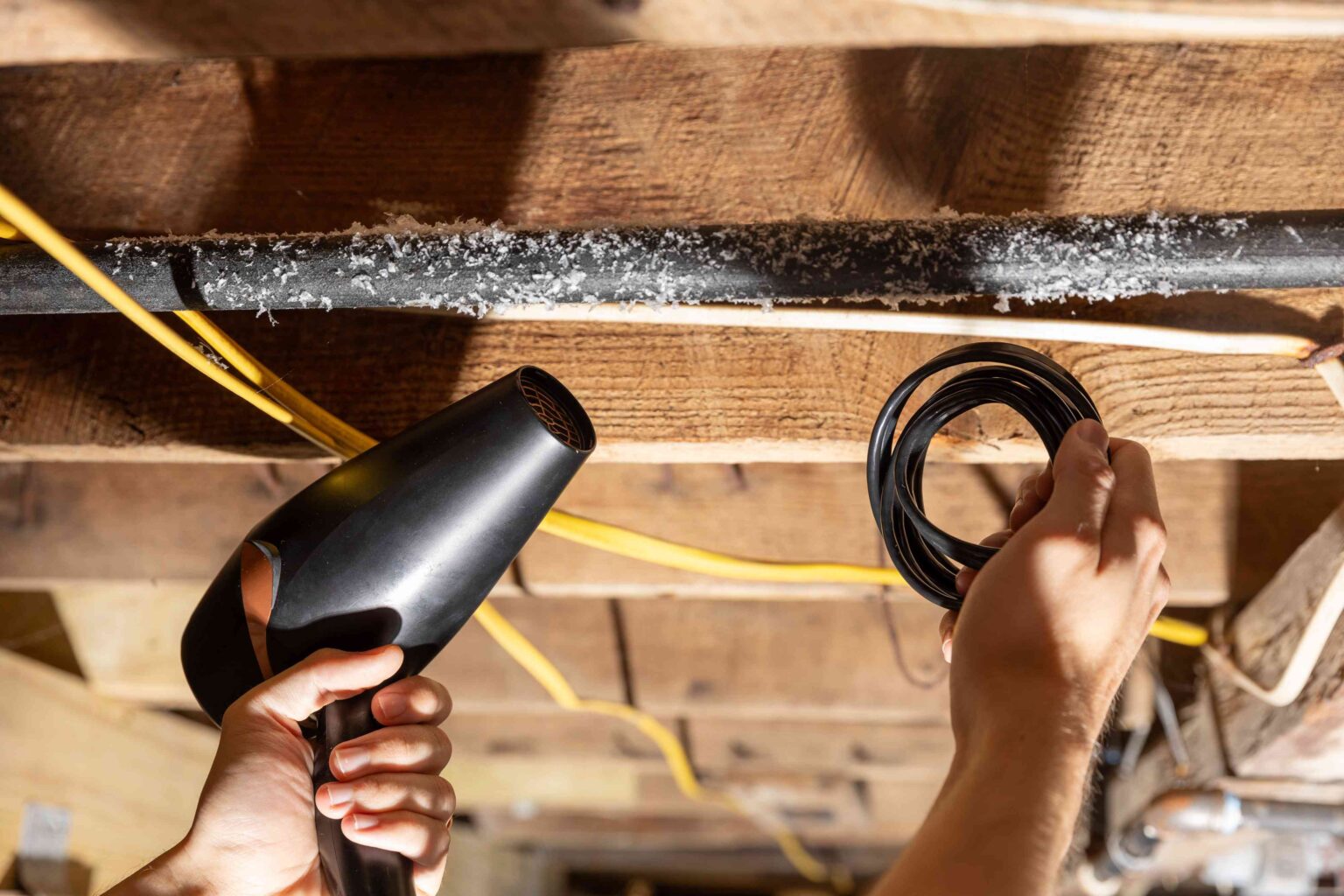Frozen water pipes are a serious risk during very cold winter weather. When water freezes in a pipe, it expands and can exert pressure at over 2,000 pounds per square inch. That’s enough to rupture almost any pipe, since there’s nowhere for the ice to expand.
A frozen pipe can be a time bomb, because there may be no leaking—that is, until the frozen water blocking the pipe begins to thaw. If left alone, thawing water from frozen pipes can cause tens of thousands of dollars in major flooding, water damage, destroyed walls, ceilings, and floors.
Why Pipes Freeze
Pipes are most likely to freeze when temperatures drop to 20°F or less, and when temperatures stay below freezing for more than a few days. They’re also susceptible to freezing when they are located:
- In an outside wall that is subject to freezing outdoor temperatures
- In a cabinet under a sink (especially near an outside wall)
- In an unheated crawl space or basement
- Near outdoor faucets (hose bibs) used to connect garden hoses
If your pipe is frozen but not yet ruptured, you must thaw it right away. There are a few thawing techniques to try, depending on where the frozen pipe is located.
Locating the Frozen Water Pipe
A frozen pipe that hasn’t burst yet often reveals itself at a faucet. If you turn on the faucet in very cold weather and no water comes out—or it’s slowed to a trickle—there’s a good chance the pipe is blocked with ice somewhere. Take immediate action with the steps below:
- Shut off the water: Look for the shut-off valve to the faucet or the home’s main water shutoff valve.
- Open the faucet: Relieve pressure by opening the faucet supplied by the frozen pipe.
- Identify the frozen pipe: Locate the blockage by following the pipe from the faucet to where it runs through cold areas, such as exterior walls or unheated crawl spaces.
- Locate a frozen blockage: Search for areas of the pipe that have frost or ice; they may also be slightly bulged or fissured.
How you thaw a pipe will depend on where it is located.
Read the full article here
